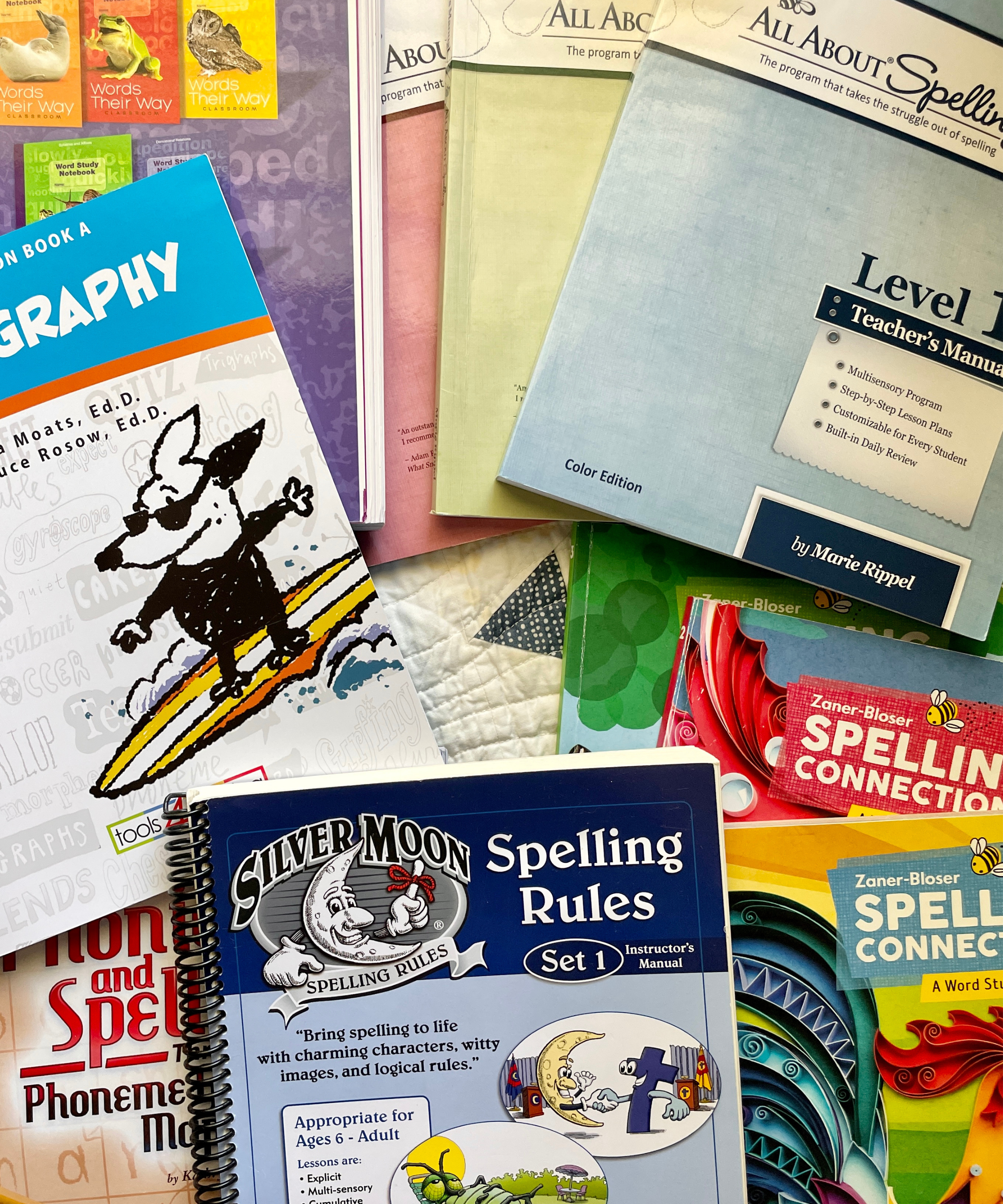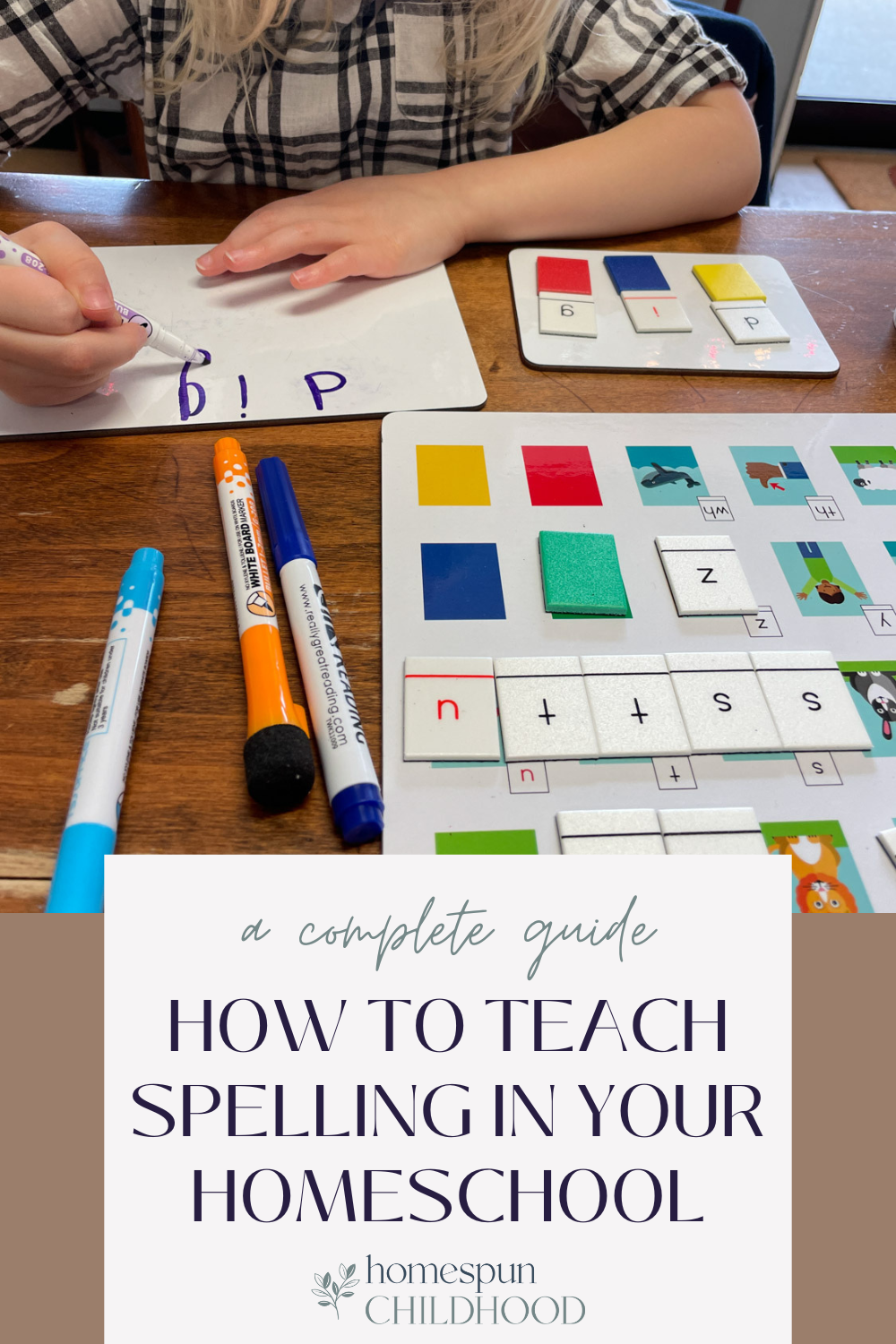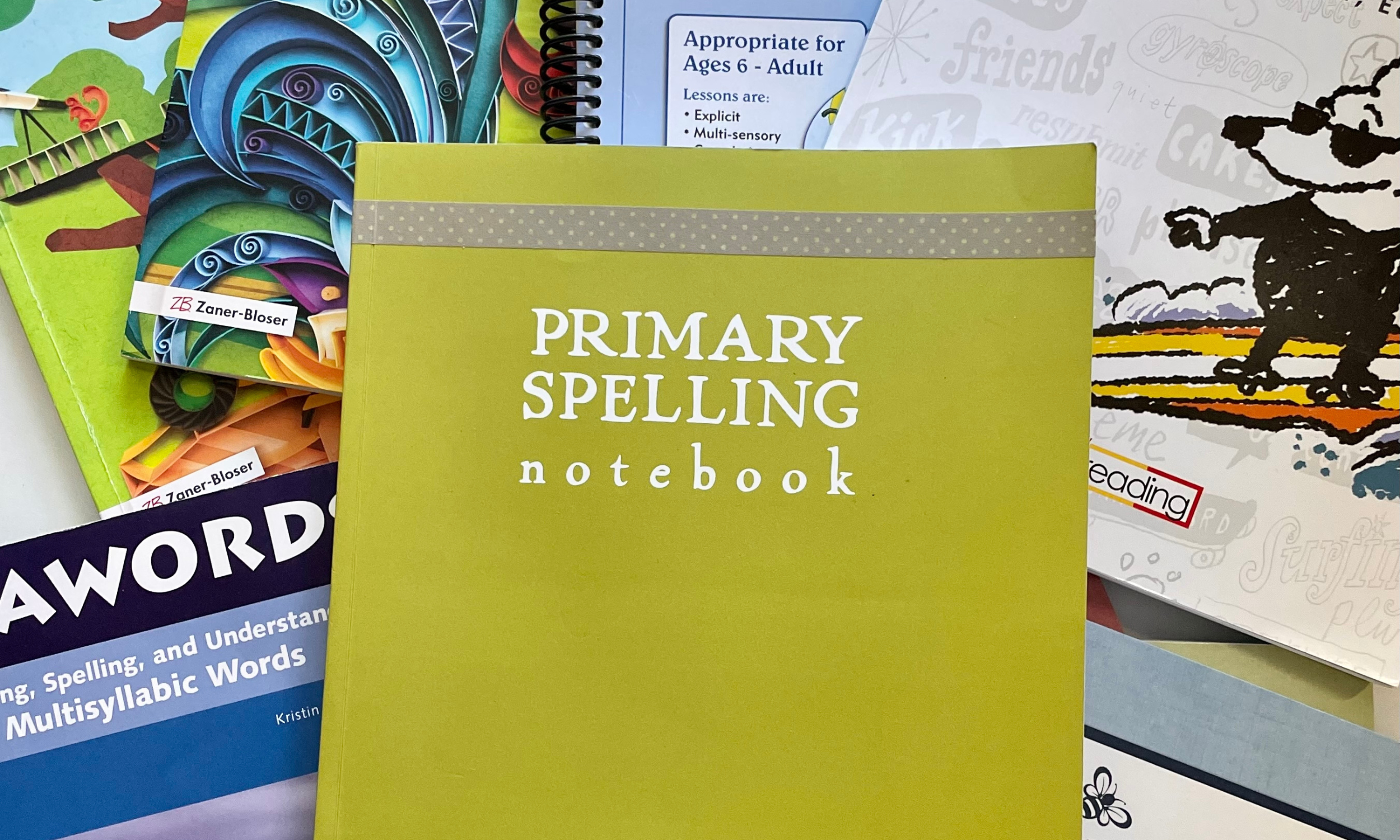Spelling
An overview of spelling instruction, including resources to support your homeschool.
This post may contain affiliate links. If you click on the link and purchase the item, I will receive an affiliate commission to support this blog at no extra cost. All opinions are my own.
Overview
Spelling instruction is a key component of literacy development. In the early years, reading and spelling intertwine.
When children learn to read words (K-2), they should also learn to write the same words. We can have children practice this through building words with a moveable alphabet, mapping words, word chaining, dictation, intentional copywork, and kid writing (I dive into these and more in my Spelling Guide).
When a child is reading fluently, we want to target their exact spelling needs through spelling inventories and following a scope and sequence. The activities look similar to those used in the early years; however, there is a heavier emphasis on word study.
Research shows us that children need systematic and explicit spelling instruction. As homeschool educators, this means we should follow a program with a clearly defined scope-and-sequence that progresses from basic spelling patterns to advanced patterns and word study. It also means that we should directly teach our students spelling patterns and rules, rather than letting them discover rules or simply memorize words.
Curriculum
There are many evidence-based spelling programs available to homeschool families, some designed for typical learners, others designed for students with learning disorders, dyslexia, and dysgraphia.
Recommended Spelling Programs for Typical Learners
All About Spelling
Spelling Connections (you do not need the teacher guide!)
Recommended Intensive Spelling Programs
Check out my favorite spelling resources here.
While many students are successful with these programs alone, other students struggle to retain spelling from week to week. For children who seem to master spelling patterns quickly but do not transfer spelling lessons to their writing, check out my Spelling Guide for pacing recommendations, weekly spelling routines, and more.
Developmentally Appropriate Spelling Instruction
Developmentally appropriate spelling instruction means supporting invented spelling alongside explicit spelling instruction.
Invented spelling, or kid spelling, is when children spell words using the sounds they hear (phonemes) and match the letter or letters they know that use those sounds (graphemes). A young child might spell the word “cat” as CT, hearing only the beginning and ending sounds. Once they learn more sounds and how to represent them with letters, their spelling improves, spelling “cat” as CAT. Invented spelling is not limited to beginning spellers. We see this with older children too, especially as they begin to write longer, more challenging words. The idea here is that children are encouraged to write words based on what they hear.
As parents, this includes a balancing act of encouraging our children to write what they hear and also recognizing that many children want to spell the word “the right way.” We can partner with our children by asking them what they hear and then filling in the gaps, providing instruction such as “Yes, great job hearing the /f/ and /i/ in “fish.” We haven’t learned the /sh/ sound yet. The /sh/ sound is spelled “S-H.”
Along with supporting our students with invented or kid spelling, we should also explicitly teach our children spelling. In the beginning years of literacy instruction, spelling and reading go hand-in-hand and support each other — children learn to decode (sound out) words as well as encode (break down spoken words to written sounds) simultaneously.






